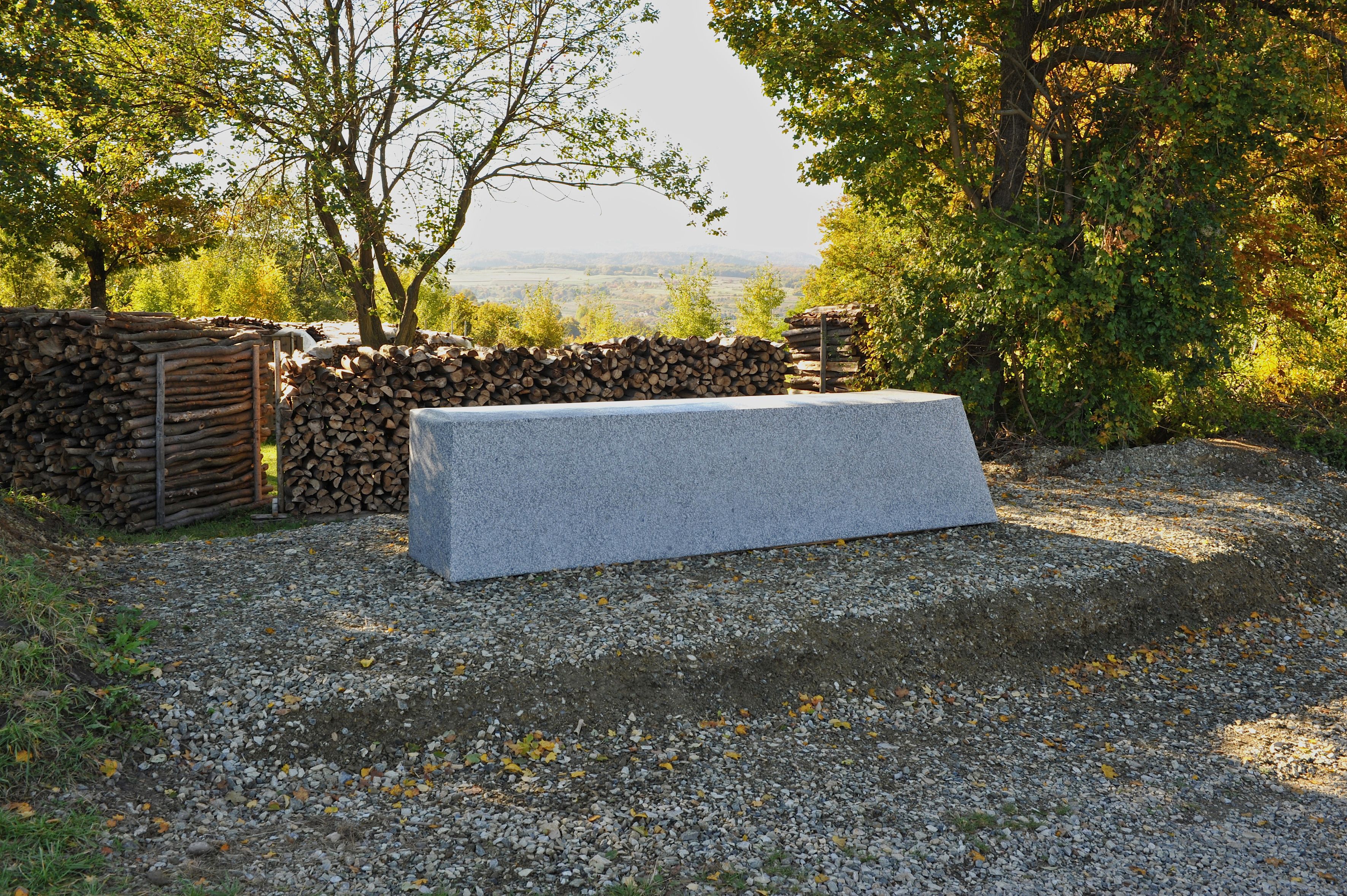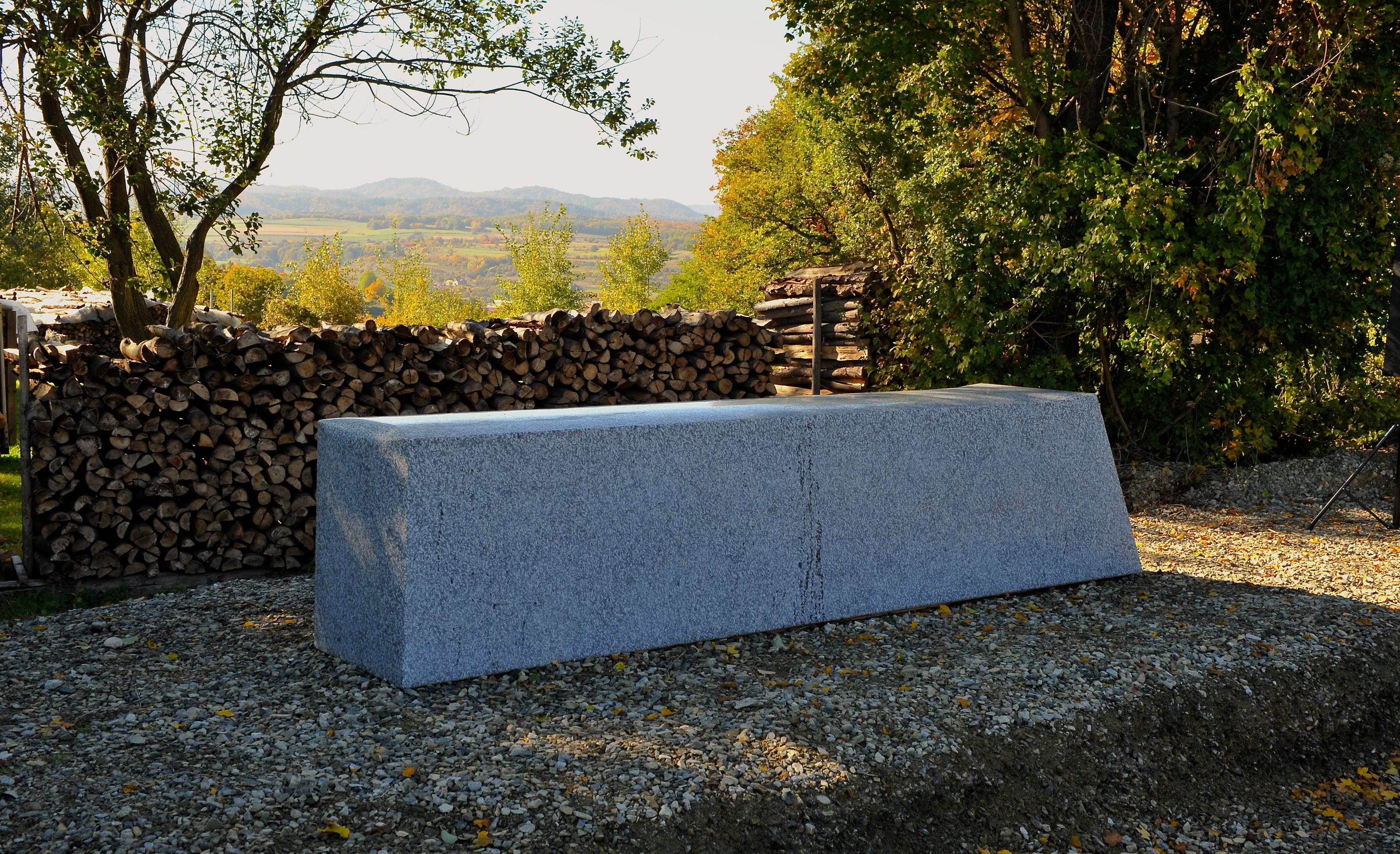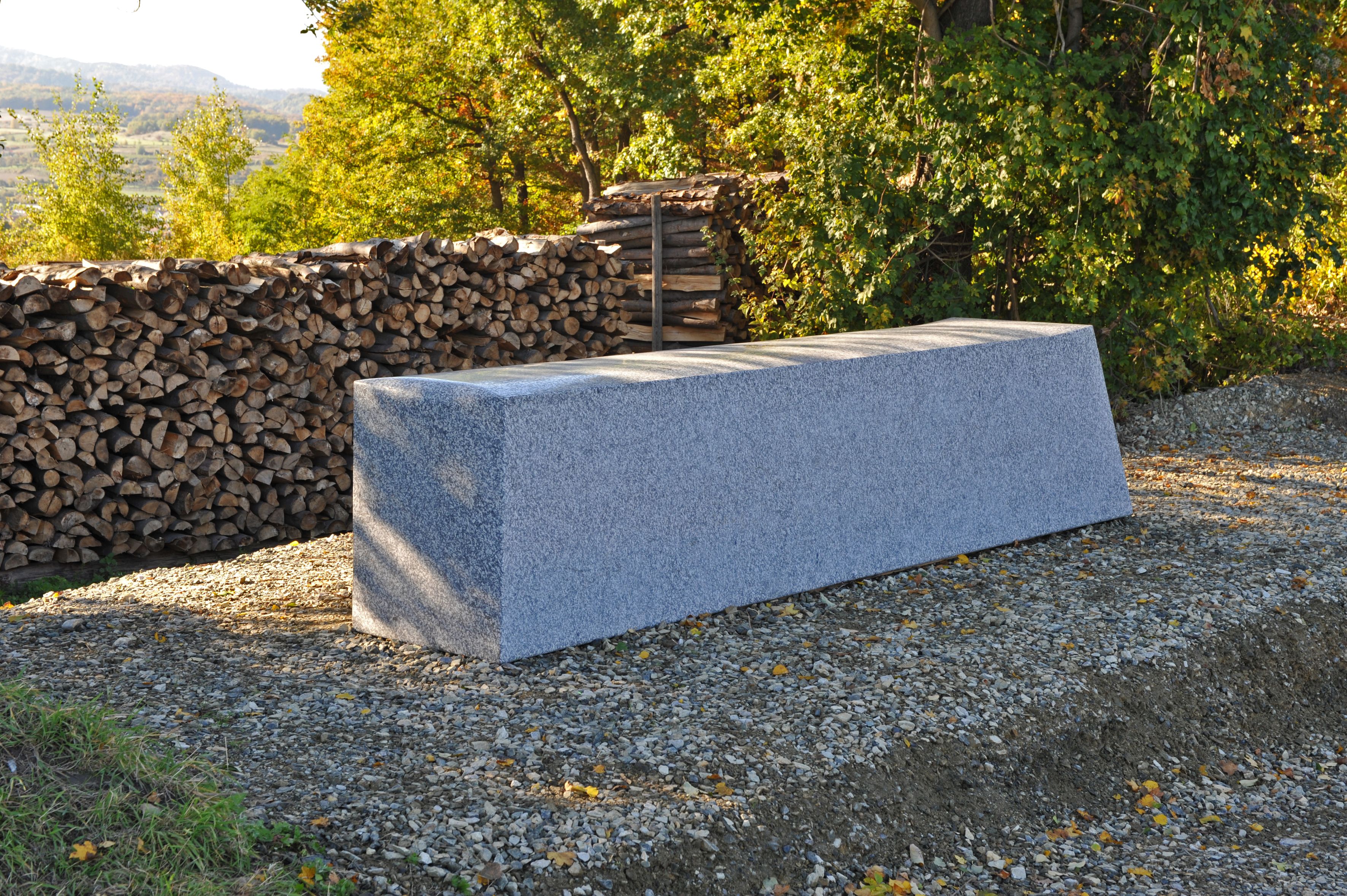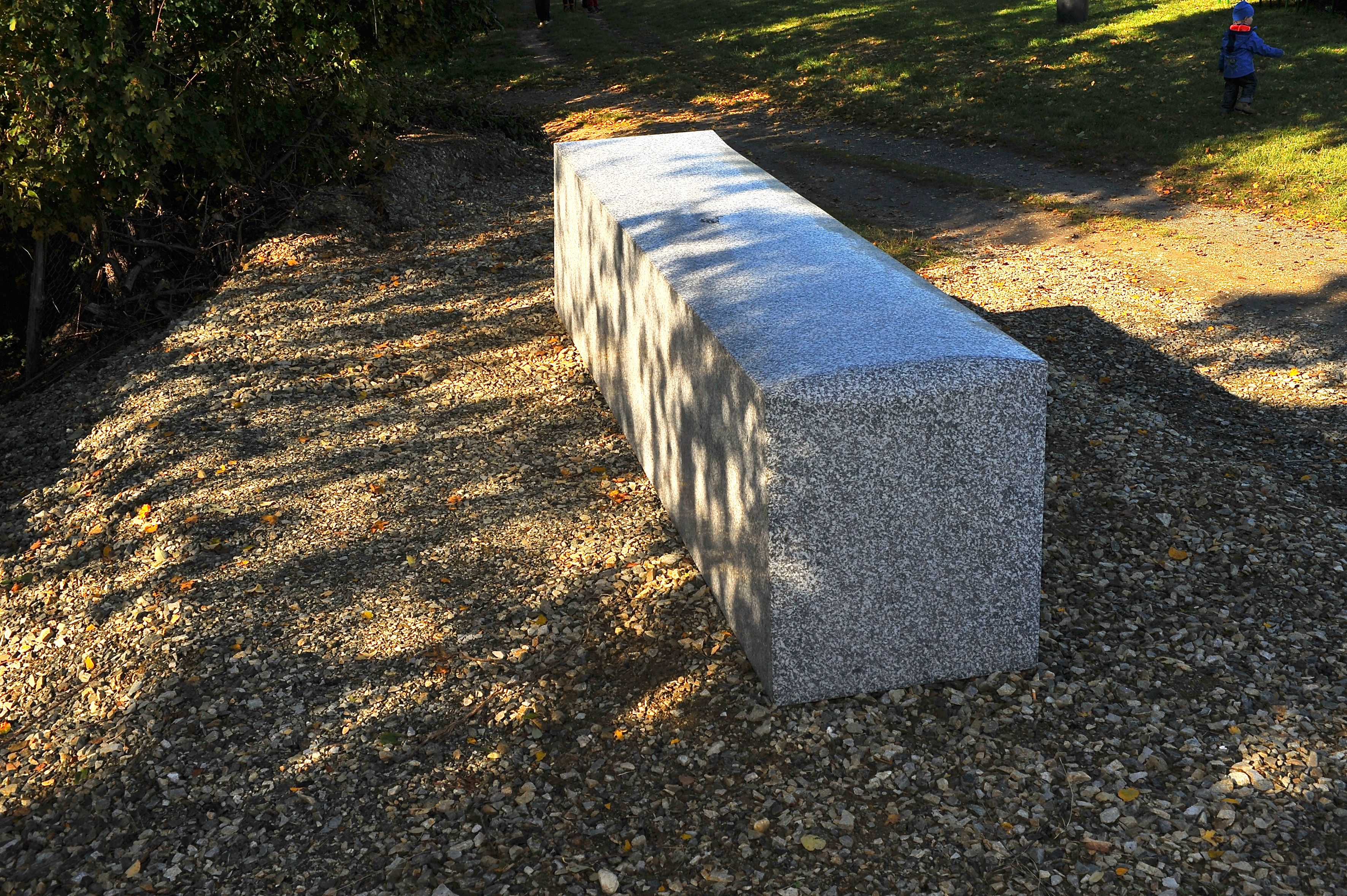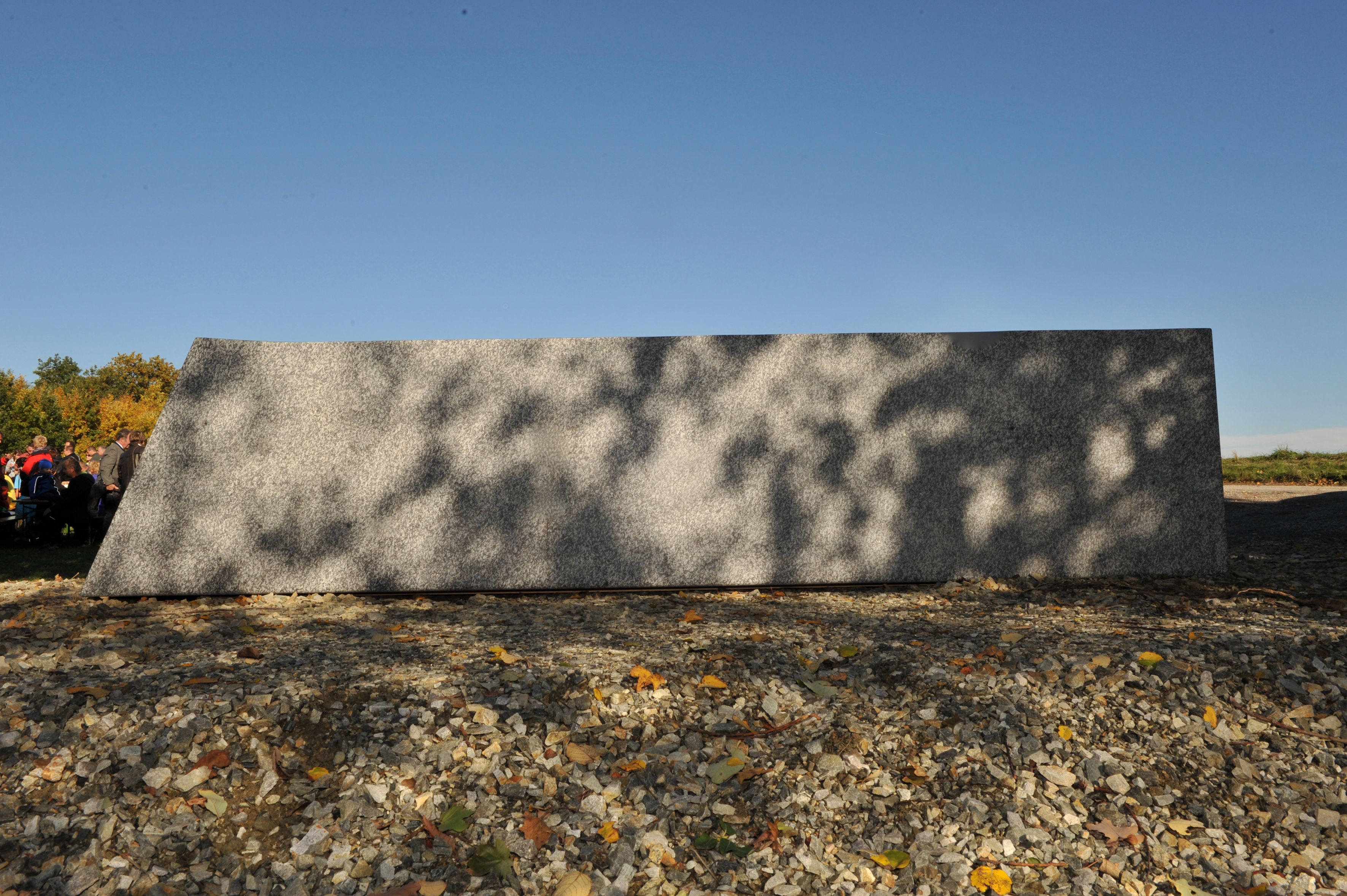Peter Paszkiewicz
:
Konkav/Konvex-Gerade
Back
Information
The sculptor Peter Paszkiewicz created an abstract sculpture made of granite (400 x 90 x 74 cm) for the town of Mautern an der Donau. It is a work of immense simplicity, in which he brings together complex opposites, like the heaviness of the material with the lightness of a drawing. The sculpture is located at a site called "Red Cross" along the Welterbesteig Wachau hiking path, which stretches over 180 kilometers through the Danube valley and the Wachau wine country.
The sculpture is based on a trialectic way of thinking, which means the proportions of the massive block of Herschenberger granite (400 x 90 x 74 cm) were subtly altered through three precise interventions on its three exposed sides: one side has a concave depression, the other a convex protrusion, and the third a slanted plane. When looking at the stone and these three contradictory approaches to form, two sides always appear to collaborate in response to the third. While a dialectics of form causes visual tension, trialectics causes our eyes to perceive an apparent movement while looking at the sculpture, lending an unexpected lightness to the heavy stone. The artist, who was born in Gmunden in 1943, takes the idea of stone as such as a starting point for his sculptures. Inspired by its quality as a material, the sculptor searches for forms that will correspond to the identity of each stone by making numerous initial sketches and handwritten notes. In his striving to achieve maximum authenticity, his works reveal the internal structures within each stone. While the artist believes he has a responsibility toward each stone as a part of nature, his sculptures also belong to a certain context. Peter Paszkiewicz says: "If we are a product of our surroundings, then it is only natural that working with sculpture – as a definition of this presence – refers back to these surroundings."
Peter Paszkiewicz’s works are the result of a complex conceptual process in which he searches for a form that will unite the selected stone with his ideas in an external and an internal balance. As to the sculpture in Wachau, he says: "Not only the stone’s proportions, but its accessibility through its horizontal form take human proportions into consideration, thereby demonstrating order." The sculpture has two inseparable parts: The stone's necessary connection to the ground – the effect of gravity on the stone and on humans – and the accompanying text that reminds us that our thoughts have the ability to fly.
(Cornelia Offergeld)
Images (5)
